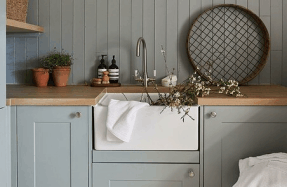EXTERIOR FINISHES

Throughout the history of British domestic architecture, façades have been both practical and ornamental. With changing tastes, industries and sources, came the use of different materials to create the exteriors of our homes. But there is one truth that unites them all – they bring character and contribute to the built environment more than anything else.
Plentiful timber
Despite the evocative image of timber-frame homes, materials such as stone, cobbles, brick and flint were widely used in the medieval period. However, the huge expense of quarrying, transporting and working stone meant that it was generally the preserve of the privileged. Local geology played a part, which is why in some areas earth walling techniques were developed, such as
You’re reading a preview, subscribe to read more.
Start your free 30 days





